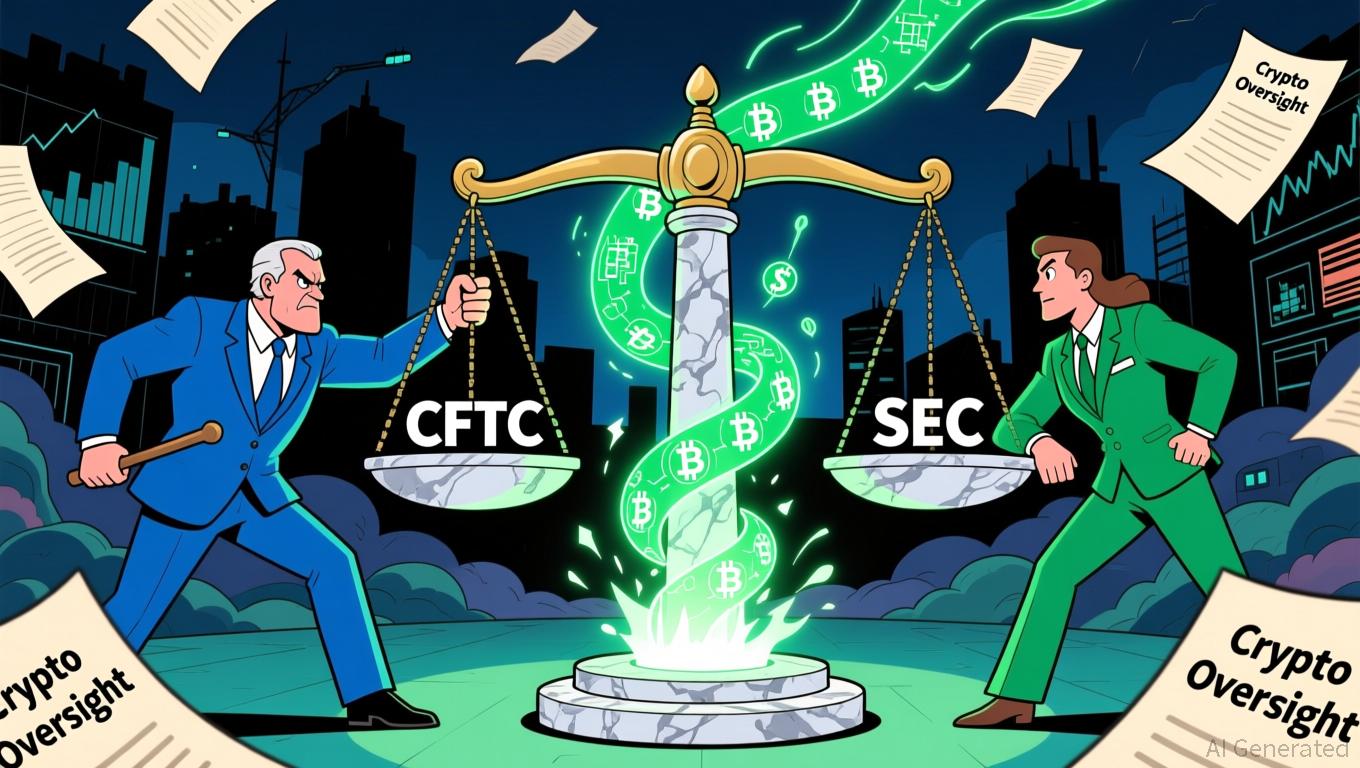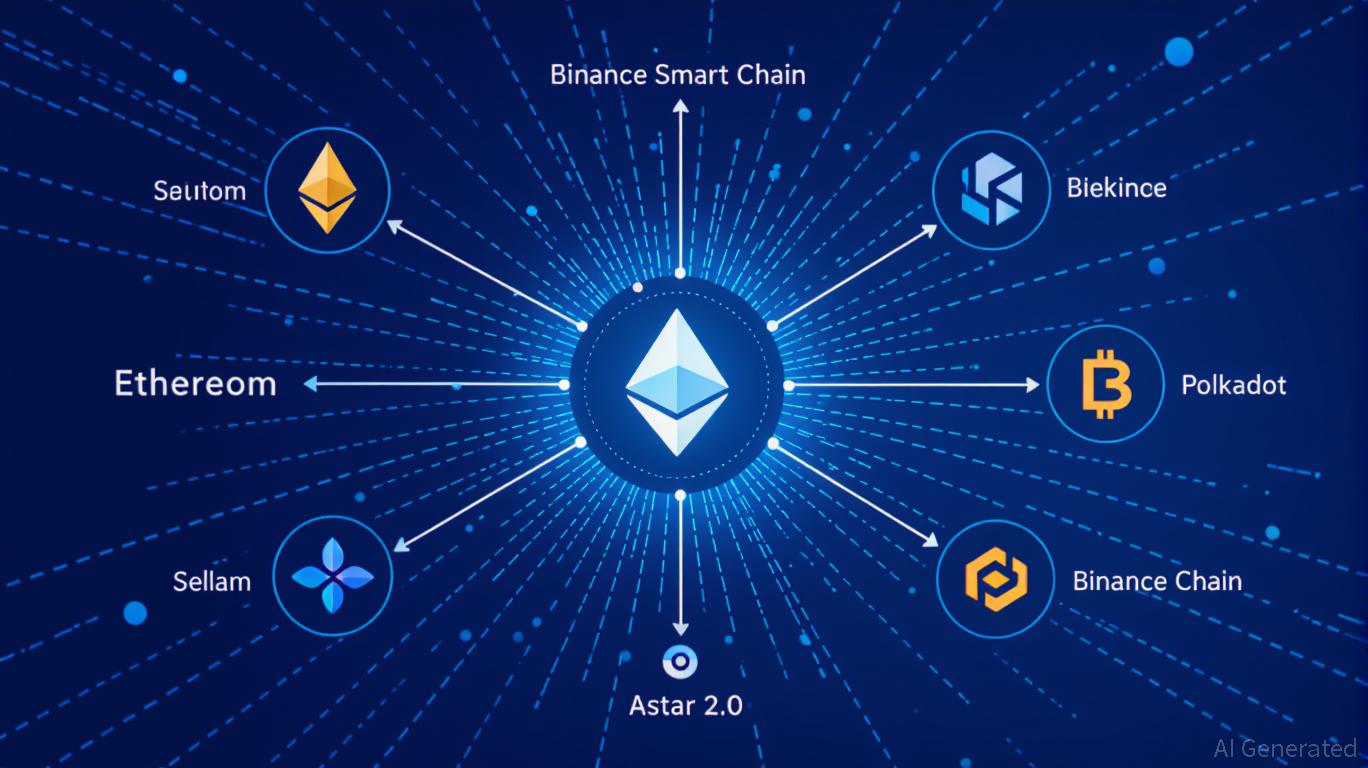MoonBull's Scarcity Approach Surpasses TON, LINK's Lackluster Progress
- MoonBull's presale raised $450k from 1,500+ investors, projecting 9,256% returns if tokens hit $0.00616. - Outpaces stagnant TON and LINK amid market volatility, leveraging 23-stage pricing and 95% APY staking. - Mobunomics allocates 73.2B tokens with 50% presale scarcity and 11% referral incentives to boost adoption. - Meme-driven narrative combines viral marketing with utility, attracting both retail and institutional investors. - Stage 5 marks final entry before listing, with escalating prices and lim

By comparison, TON and LINK have seen limited price movement. TON, despite its expanding ecosystem, has struggled to hold gains amid market fluctuations, while Chainlink's price has dropped due to profit-taking and decreased demand for decentralized oracle solutions, as per a
MoonBull's momentum is also fueled by its meme coin identity, combining viral marketing with practical features. Unlike typical meme coins, MoonBull integrates structured tokenomics and passive earning opportunities, making it appealing to both individual and institutional investors, according to a
At the same time, broader market trends highlight the demand for high-risk, high-reward investments. The recent U.S.-China trade deal, which prevented rare earth export bans, has stabilized supply chains but hasn't sparked widespread crypto excitement, as noted by Bitget. While institutional interest in crypto exchanges is rising—evidenced by Bullish's $4.8 billion IPO bid—this hasn't led to immediate gains for TON or LINK.
Disclaimer: The content of this article solely reflects the author's opinion and does not represent the platform in any capacity. This article is not intended to serve as a reference for making investment decisions.
You may also like
Bitcoin News Update: CFTC's Broader Role in Crypto Regulation Ignites Discussion on Clearer Rules
- U.S. lawmakers propose expanding CFTC's crypto oversight via a bill reclassifying spot trading, diverging from SEC's enforcement approach. - Harvard University invests $443M in BlackRock's IBIT ETF, reflecting institutional confidence in crypto as a legitimate asset class. - DeFi projects like Mutuum Finance raise $18.7M in presales, leveraging regulatory momentum and transparent on-chain credit systems. - RockToken's infrastructure-backed crypto contracts attract long-term investors with structured yiel

DASH Aster DEX's Latest On-Chain Growth and What It Means for DeFi Liquidity
- DASH Aster DEX leads 2025 DeFi shift with hybrid AMM-CEX model and multi-chain support (BNB, Ethereum , Solana), boosting TVL to $1.399B and Q3 daily trading volumes of $27.7B. - Platform's 1,650% ASTER token price surge post-TGE attracted 330,000 new wallets, with 94% of BSC-USD volume ($2B/day) driving institutional adoption via Binance/YZi partnerships. - ASTER token mechanics enable 80% margin trading, 5-7% staking rewards, and governance rights, while annual 5-7% fee burns create scarcity and align

Astar 2.0: Leading a New Generation of DeFi and Cross-Chain Advancements
- Astar 2.0 introduces a zkEVM mainnet and cross-chain interoperability, slashing gas fees and enabling 150,000 TPS with 2025 scalability goals. - Strategic partnerships with Mazda, Japan Airlines, and Sony demonstrate blockchain's real-world applications in logistics, loyalty programs, and digital asset tokenization. - Q3 2025 data shows $2.38M DeFi TVL growth and 20% active wallet increase, alongside a $3.16M institutional ASTR token acquisition. - The platform aims to solidify its role as a foundational

Aster DEX Introduces New On-Ramp: Transforming Retail Participation in DeFi
- Aster DEX integrates institutional-grade custody and privacy tech (zero-knowledge proofs) to bridge retail-institutional DeFi gaps via BNB Chain partnerships. - TVL surged to $2.18B by late 2025 through yield-bearing stablecoins and hidden orders, attracting both retail and institutional liquidity. - Despite compliance gaps and wash trading concerns, Aster's Binance alignment and Coinbase listing signals growing institutional validation.
